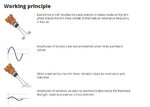- Joined
- Jul 4, 2009
- Messages
- 16,273
- Helped
- 5,140
- Reputation
- 10,309
- Reaction score
- 5,131
- Trophy points
- 1,393
- Location
- Aberdyfi, West Wales, UK
- Activity points
- 137,728
... could equally be part of an echo sounder, an ultrasonic cleaner or a bird scarer. Over to you Mehmet....!
Brian.
Brian.



